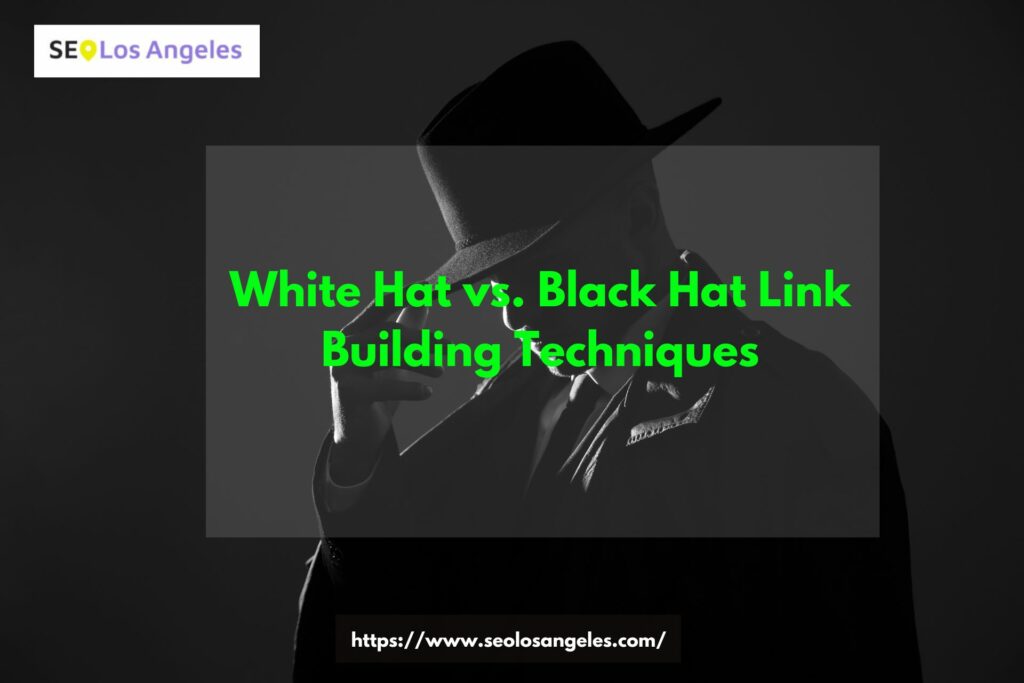White hat and black hat link building techniques are two contrasting approaches to acquiring backlinks for a website. Backlinks are links from other websites to your site, and they are a crucial factor in search engine optimization (SEO). The primary difference between these two approaches lies in their ethical and compliance with search engine guidelines:
- White Hat Link Building Techniques:White hat techniques adhere to search engine guidelines and are considered ethical and sustainable in the long term. They focus on building high-quality, natural backlinks that genuinely add value to the web:
a. Content Marketing: Creating valuable, informative, and shareable content that naturally attracts backlinks from other websites.
b. Guest Blogging: Writing guest posts for reputable websites within your niche, providing valuable content in exchange for a backlink.
c. Outreach: Reaching out to relevant websites or bloggers and building relationships that can lead to natural backlinks.
d. Social Media Sharing: Promoting your content on social media platforms to increase its visibility and encourage natural sharing and linking.
e. Link Reclamation: Identifying and fixing broken backlinks or mentions of your brand or content that don’t currently link to your site.
f. Partnerships and Collaborations: Partnering with other businesses or websites in your industry for mutually beneficial linking opportunities.
White hat techniques prioritize user experience and content quality while following search engine guidelines, making them a safer long-term strategy.
- Black Hat Link Building Techniques:Black hat techniques involve manipulating or gaming search engine algorithms to acquire backlinks quickly. These techniques often violate search engine guidelines and can result in penalties or de-indexing:
a. Link Farms: Creating or participating in networks of low-quality websites that exist solely for the purpose of linking to each other.
b. Paid Links: Buying links from other websites, often without any regard for relevance or quality.
c. Keyword Stuffing: Overloading content with keywords and links to manipulate search engine rankings.
d. Private Blog Networks (PBNs): Creating a network of blogs with the sole purpose of linking to a target site.
e. Spammy Comments: Posting irrelevant or low-quality comments on blogs and forums with links back to your site.
f. Link Exchange: Swapping links with other websites solely for the purpose of manipulating search engine rankings.
Black hat techniques can provide short-term gains in search engine rankings, but they carry a high risk of penalties, including being removed from search engine results entirely. Search engines are continually improving their algorithms to detect and penalize black hat practices.
In summary, white hat link building techniques focus on quality, relevance, and ethical practices to build backlinks, while black hat techniques rely on manipulation and often violate search engine guidelines. White hat methods are generally recommended for long-term SEO success, as they are less risky and more sustainable.
